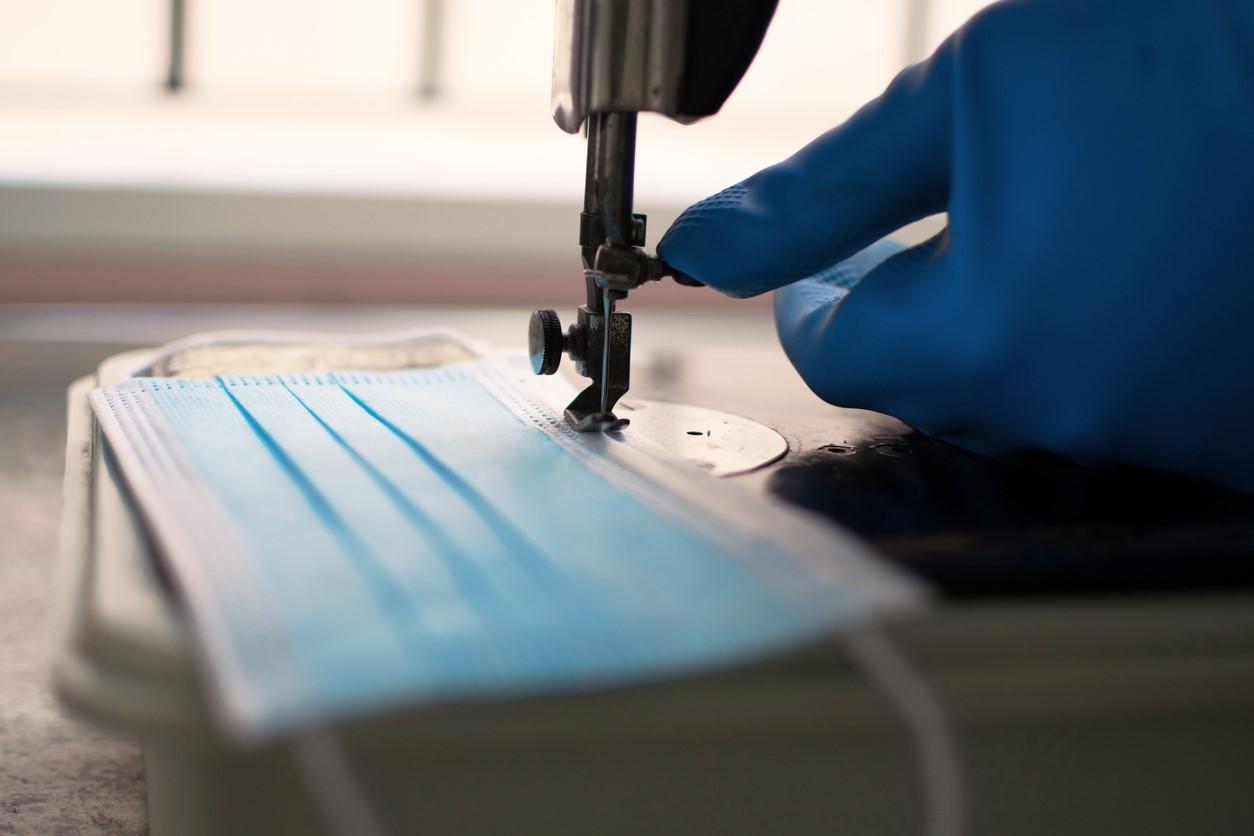A Society for Healthcare Epidemiology of America (SHEA) survey of its network hospitals revealed that 40% had shortages of respirators for healthcare workers at "limited" or "crisis" levels amid the COVID-19 pandemic, 68% used or were planning to use strategies to stretch their respirator supply, and 13% were self-producing personal protective equipment (PPE) and testing supplies.
In April, the SHEA Research Network surveyed one epidemiologist or infectious disease specialist at 69 healthcare facilities (73% response rate), including 58 in the United States and Canada and 11 abroad, about how their facilities were adapting their PPE policies as shortages and knowledge about the coronavirus evolved.
Among respondents to the 21-question survey, 52% said they had to ask healthcare workers in certain hospital units to use the same disposable N95 respirator for a whole day, 71% who reported PPE at "limited" or "crisis" levels practiced extended respirator use or reuse, and 48% said they reprocessed respirators. Some healthcare workers used surgical or cloth masks over their respirators and stored them in a paper bag to preserve them for reuse.
Twenty-three (33%) of 69 respondents said they were cleaning respirators with vaporized hydrogen peroxide, while 11 (16%) said they used ultraviolet irradiation, 3 (4%) used ethylene oxide, and 1 (1%) used exposure to moist heat for 30 minutes.
Nine of 60 hospitals (15%) characterized their supply of respirators as "sustainable for the pandemic," while 27 (45%) said their supply was "adequate for the current situation."
Improvising PPE, test supplies
Sixteen (59%) of 27 hospitals who said their supply of gowns was "limited" or "crisis-level" were having workers wear gowns for an extended time or reuse them. Among facilities, 13% said they were making their own PPE, including face shields (5), eye shields (2), coveralls (2), gowns (1), and surgical masks (1), and 25% were making testing supplies such as transport media (13), swabs (11), and collection tubes (3).
Overall, on a scale of 1 to 5, with 5 being "sustainable for pandemic" and 1 being "crisis-level (almost out/none)," gloves were rated a 4, eye coverings 3.7, surgical masks 3.6, respirators 3.5, and gowns 3.4.
A strong majority (81%) of respondents reported having access to in-hospital coronavirus tests, and 64% said they tested patients who had no symptoms before performing some procedures. In the United States and Canada, average state- or province-wide rate of COVID-19 infection was reported to be 48.2 cases per 10,000, with a few regions experiencing large outbreaks.
Thirty-seven (54%) of 69 facilities indicated that they provided scrubs for their healthcare workers, with 32 (46%) laundering the scrubs at the hospital at the end of shifts. Twenty-three (33%) had an on-site shower for workers to use before going home, and 25 (36%) provided on-site or local accommodations during the pandemic.
Forty-six (67%) of 69 respondents said they received guidance primarily from their institutions on PPE optimization, potential COVID-19 treatments, patient triage, or hospital visitors, while only one-third reported receiving such guidance from state officials or professional societies.
Burdening already stressed healthcare workers
The authors noted that a number of respondents indicated that their hospitals allowed healthcare workers to use respirators for certain procedures on non–COVID-19 patients, even when they were not indicated, which would have shrunk their supply.
They also said shortages of PPE, hand sanitizer, and tests and test reagents, as well as supply chain breakdowns, placed an additional time and energy burden on already stressed hospital workers amid uncertainties over presymptomatic and asymptomatic COVID-19 spread.
"Additionally, recommendations issued by public health authorities and professional societies differed in key areas as the pandemic accelerated, particularly related to the type of respiratory protection to be worn in different settings and the indications for diagnostic testing," the authors wrote. "Facilities had to rapidly identify and implement practices in the absence of unified guidance from authorities, while providing reassurance to healthcare personnel (HCP) across sectors and roles when approaches differed from those issued by their trusted sources."
The authors called for research on ways to strengthen hospitals and communities to conserve PPE for future outbreaks of COVID-19 and other emerging infectious diseases, as well as on the effectiveness of reusing PPE and the impact of social isolation on patient outcomes. They also recommended strengthening collaboration between states and professional societies to avoid mixed public health messages.






















